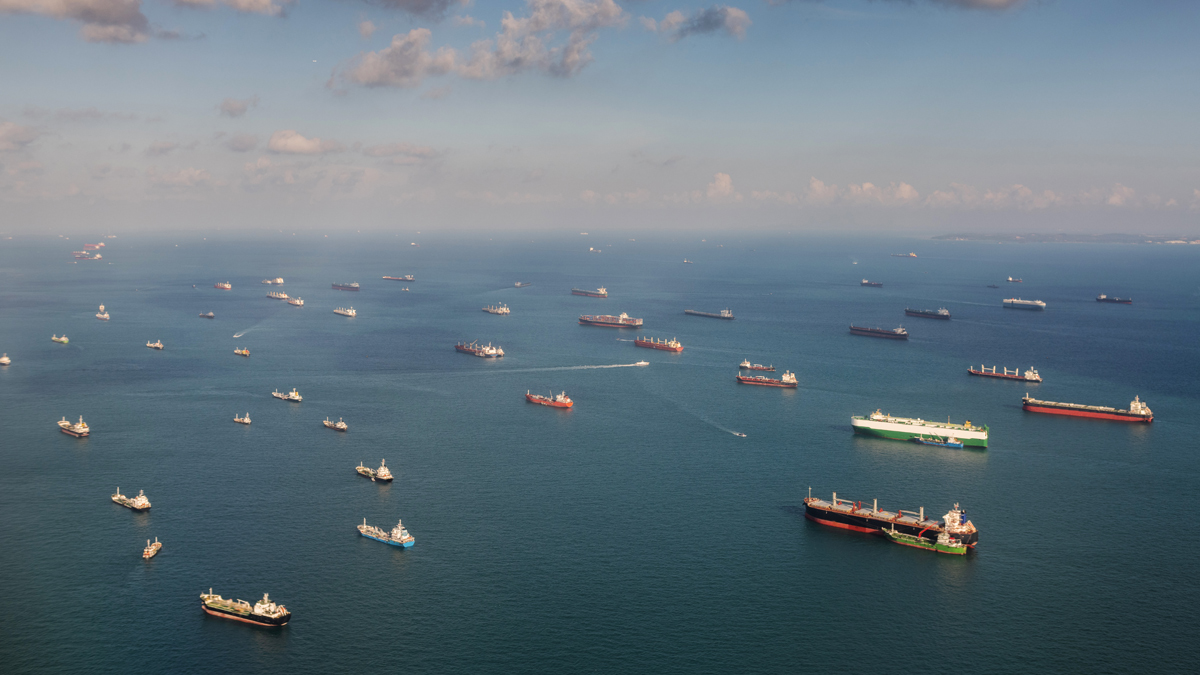How to profit from a global shipping traffic jam, with WiseTech CEO Richard White

Picture: Getty Images
Amid the global post-COVID shipping crisis that could take years to unwind, freight software firm WiseTech Global (ASX:WTC) has been doing good business.
That was made evident in its FY21 results last week which showed the company dialled up a 149% lift in free cash flow to $139.2m on revenues of $507.5m — most of which was driven by its CargoWise logistics platform.
Investors cheered, and the stock mooned to an intra-day high of $55 (prompting a speeding ticket from the ASX) before settling in the mid-$40 range.
The move suggested markets think WiseTech can hitch a ride to the post-COVID shipping boom, as logistics companies scramble to improve efficiencies.
And it marks a far cry from 2019, when short sellers accused the company of touching up its M&A strategy with creative accounting techniques.
Speaking with Stockhead following the result, CEO Richard White said the company is hoping to leverage its existing client base into more contract deals as the global economy emerges from the pandemic.
Wisetech Global — views on the shipping crisis
To begin with, White discussed the changes in the global shipping industry that have played out over the last 18 months, viewed through the lens of a software logistics company.
Initially, global shipping lines pulled back volumes “dramatically” for what they thought would be an “oncoming storm”, he said.
With the benefit of hindsight, the complete opposite turned out to be true.
“We’ve seen shipping companies try to bring older vessels back into service and maximise utility,” White said.
“Many lines have started ordering new fleet — the top 20 lines have more than 20% worth of additional capacity on their order books right now.”
“We expect that to continue because balance sheets have strengthened, but those investments take time.”
Global air freight was also “very constrained” in the early going as global passenger fleets were grounded.
“About 50% of the world’s air freight moves in holdings on passenger planes, so that made a big dent,” White said.
“It’s come back, but that’s mainly been through cargo conversions (of passenger planes). So we expect air freight channels to improve over the next six months as passenger capacity comes back online.”
Channels such as air freight and on-land logistics also have an added degree of flexibility, compared to the time it takes to build new shipping vessels.
“We’re expecting sea freight demand to maintain or even increase and I don’t think it will go back to the the way it was,” White said.
“Capacity constraints will lighten a bit with air freight coming on but I think they’ll probably be around for the next 12 months, as we move to full utilisation or even over-capacity at which point prices will come down again.”
Market opportunity
A feature of the post-COVID economy was the shift from services (such as travel) to goods-based demand, driven in part by limited mobility combined with higher savings rates.
And as the global shipping trade moved into overdrive, White said CargoWise was well-placed to benefit from the need to streamline logistics networks, which all of a sudden became much more apparent.
In its FY21 investor presentation, WiseTech said 10 of the top 25 global freight forwarders have now either rolled out or are rolling out CargoWise.
How did it build that traction? White said early success with a major customer helped — in this case, German logistics giant DHL, which commenced its CargoWise rollout in FY16.
“That demonstrated our ability to put large operator on a single global database to coordinate in an automated way. And DHL’s been positive about that capability,” White said.
“For example, I think they said they reduced their internal licensing costs from US$330m to US$280m (and I can assure you we didn’t get that differential).”
In the wake of the post-COVID shipping crunch, customers have been “much easier to talk to and quicker to make their minds up”, White said.
However, “the implementation of the system is done at different speeds by different companies”.
In October last year, Dubai-based logistics group Aramex took a ‘big bang’ approach, going live with CargoWise across its global network in a single day, then ironing out the kinks over the following three months.
“DHL was a much bigger process that took years to roll out, and we did it in a staggered way,” White said.
“But what is true now is that customers are taking a much faster run than they would have five years ago.”
Going all the way back to 2006, WTC has built a client base of 36 logistics companies that have implemented a rollout using the CargoWise platform.
And FY21 marked its most productive year in that time with six new rollout agreements, five of which are currently in production.
Investors also latched onto news that WiseTech also booked US cargo giant FedEx as a new client in FY22.
“We have pretty strong pipeline and a lot want to understand how to take advantage of the platform,” White said.
However, “not every can suddenly just write off the investment in their existing infrastructure, and say ‘let’s just use CargoWise’,” he added.
“It takes time. A lot of companies have internal sunk costs where they’ve been running internal programs for 5-10 years with lots of capital investment. They’re not always successful but it’s hard to write off because it impacts the P&L (profit & loss statement).”
“At the same time, when these cycles come up is when boards take a closer look to try and re-evaluate things and then we get an opportunity.”
“So across the top 25 global freight forwarders and the top 200 logistics providers, we’re looking at plenty of new deals. There’s only around 20 on the table at any one time, but they’re all material from a revenue-generating perspective.”
UNLOCK INSIGHTS
Discover the untold stories of emerging ASX stocks.
Daily news and expert analysis, it's free to subscribe.
By proceeding, you confirm you understand that we handle personal information in accordance with our Privacy Policy.








